A series of missions are set to reveal the hidden secrets of the asteroids. Nina Notman explores the science of space rocks
‘We are living in the golden age of asteroid exploration,’ announces Alan Fitzsimmons, professor of astronomy at Queen’s University Belfast, UK. Two spacecraft are currently in the process of collecting samples from asteroids and returning them to Earth. And in the next few years, crewless missions will visit other near-Earth asteroids as well as those further afield in the main asteroid belt and Jupiter’s Trojan asteroids.
Asteroids have the potential to answer one of the biggest questions in science: how did life on Earth begin? ‘The water and organics on Earth didn’t form with the planet, they came in later on asteroids,’ explains Harold Levison, a chief planetary scientist at Southwest Research Institute, Boulder, US. But we don’t know the details of how this happened or what exactly these asteroids carried with them.
To really understand the chemical and physical conditions upon which planets formed, you need to go to the asteroids
Studying asteroid composition can help us fill in some of these knowledge gaps. ‘I like to use the analogy of a murder scene,’ Levison says. ‘Sometimes the blood splattered on the wall tells you more about what happens than the body lying on the floor. These small objects represent the blood splattered on the wall.’
Asteroids can also help scientists better understand planet formation. ‘Planets form as part of a system, where materials run into each other and accrete,’ explains Levison. ‘Asteroids are leftovers of that original formation process and have remained relatively unchanged since then. To really understand the chemical and physical conditions upon which planets formed, you need to go to the asteroids.’
The asteroids strike back
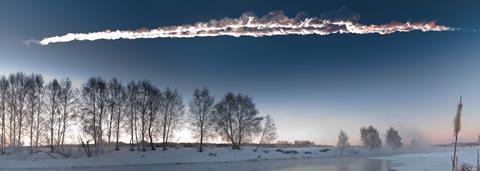
Planetary defence is another reason behind the increased interest in asteroids. In July 1994, Nasa’s Hubble Space Telescope and Galileo spacecraft both ‘directly observed the Shoemaker–Levy 9 comet impact into Jupiter’, explains Dante Lauretta, professor of planetary science at the University of Arizona, US. Approximately 20 large fragments from the comet slammed into the gas giant at around 200,000km per hour. ‘The idea that the small bodies of the solar system could cause large-scale disasters on the surface of the Earth today got the interest of politicians and policymakers,’ Lauretta says.
A large object entered the atmosphere over Chelyabinsk, Russia, and exploded – thousands of people were injured
More than 20,000 asteroids and 100 comets travel round the sun in orbits that cross the Earth’s . Millions of fragments from these, and other items such as space junk, enter the Earth’s atmosphere every day. Most are instantly vaporised, forming meteors or ‘shooting stars’. But thousands each year survive entry and go on to strike the Earth. These are called meteorites.
The vast majority of meteors are tiny or go unnoticed, landing in the ocean or uninhabited regions. But noticeable strikes of inhabited areas are not unheard of. In 2009, for example, multiple asteroid fragments landed near Grimsby in Ontario, Canada, with one 46g meteorite smashing a parked vehicle’s windscreen.
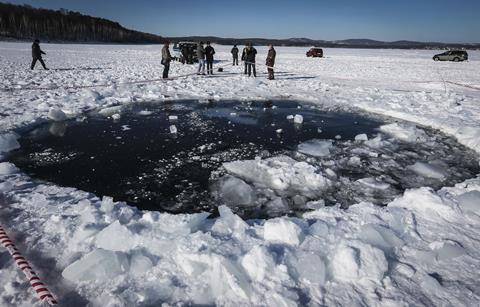
Four years later, in February 2013, a much more serious event occurred. ‘A large object entered the atmosphere over Chelyabinsk, Russia, and exploded,’ says Lauretta. The blast, 15 miles above the Earth’s surface, was stronger than a nuclear explosion. It was the shockwave from this, rather than the meteorite’s impact, that caused the main hazard on the ground. There was widespread damage including shattered windows and buildings knocked down. ‘Thousands of people were injured in that event,’ Lauretta adds.
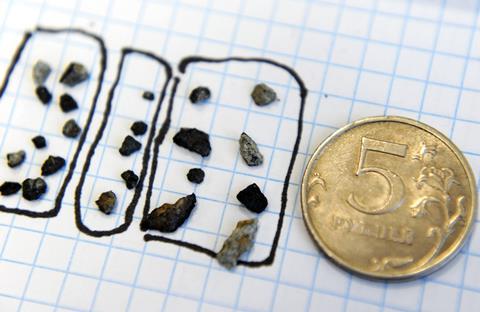
The asteroid responsible was about 20m in diameter. But far larger asteroids have struck the Earth at various points throughout its history. The most famous is the tens of kilometre wide asteroid that hit Mexico 65 million years ago, creating a 150km wide and 20km deep crater and probably contributed to the extinction of the dinosaurs. In 1908, 2000km2 of forest in a remote part of Siberia was flattened by an explosion – the largest in recorded history – believed to have been caused by a meteor up to 200m across.
The return of material
By the end of the space race, moon sample collection was commonplace. Nasa’s Apollo missions returned 382kg of rocks, dust and core samples. Russia’s Luna-16, Luna-20 and Luna-24 missions also returned samples. Although several spacecraft have visited asteroids (see box A long time ago and far, far away), the only space samples returned to Earth since then have been the specks of dust from the Stardust and Hayabusa missions. But now, 45 years after the end of the space race, sample return is staging a comeback.
Jaxa’s Hayabusa2 mission arrived at the near-Earth asteroid Ryugu in June 2018, where it spent 17 months orbiting, collecting data and – hopefully – samples. The sample capsule is scheduled to arrive back on Earth in late 2020. The Nasa Osiris-Rex mission, meanwhile, pulled alongside Bennu in December 2018, and is currently orbiting this near-Earth asteroid. Sample collection is scheduled for August 2020 and sample arrival for 2023.
Meteorites are problematic because they’re contaminated with terrestrial bacterial organisms
Fitzsimmons explains the importance of sample return: ‘We now have the ability to put incredibly sophisticated instruments on board spacecraft and operate them in deep space. But none of them will ever provide the same resolution and fine detail as being able to do those studies in a well-equipped laboratory on Earth. ’
Data from returned space samples complement and support data collected about asteroids from other means: space telescopes, ground-based telescopes and from studying meteorites. Asteroids are the source of most of the over 50,000 meteorites that have been found on Earth. Studying them therefore provides vital clues as to what asteroids are like. But when it comes to studying the origin of life there is a major issue: contamination. When looking at ‘the organic compounds that are central to life, the critical amino acids that make up proteins or nucleic acids or phosphate sugar compounds, meteorites are problematic because they’re contaminated with terrestrial bacterial organisms’, explains Lauretta, the principal investigator for the Osiris-Rex mission.
Space agencies are also currently very interested in sample return for technological reasons: they need to perfect safe-return techniques in preparation for an even more precious cargo: humans. Crewed missions to the moon and then Mars are both expected in the not too distant future.
A long time ago and far, far away
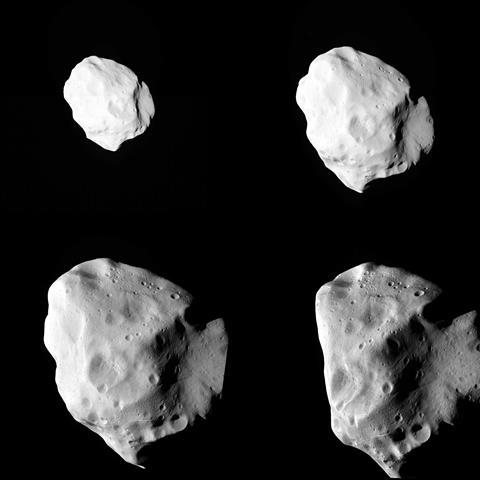
The first spacecraft to fly past an asteroid was Nasa’s Galileo mission, en route to studying Jupiter and its moons. It passed through the main asteroid belt between Mars and Jupiter, briefly observing Gaspara in 1991 and Ida in 1993.
The first mission dedicated to asteroid exploration followed a few years later. Nasa’s Near-Shoemaker spacecraft flew by Mathilde in 1997 before orbiting and landing on Eros. Both these asteroids are in the main belt. Two further flybys of asteroids in this region followed. Nasa’s Deep Space 1 flew by Braille and Stardust flew by Annefrank before collecting dust samples from the coma of the comet Wild 2.
Then came the first mission to collect a sample from an asteroid. The Hayabusa mission, launched in 2003 by the Japan Aerospace Exploration Agency (Jaxa), picked up approximately 1500 grains of rocky particles from the near-Earth asteroid Itokawa, returning it to Earth in 2010. ‘Hayabusa was the first spacecraft that went farther than the moon, landed and came back to the Earth,’ explains Jaxa’s Makoto Yoshikawa.
The Rosetta mission from the European Space Agency (ESA) came next, encountering two asteroids in the main belt – Steins in 2008 and Lutetia in 2010 – en route to the comet 67P/Churyumov–Gerasimenko. Nasa’s Dawn mission arrived at the main asteroid belt the following year, orbiting Vesta before heading off to its final rendezvous, the dwarf planet Ceres. Then the 2012 Chang’e-2 mission from the China National Space Administration (CNSA) flew by the near-Earth asteroid Toutatis on its way home from the moon.
The voyage home
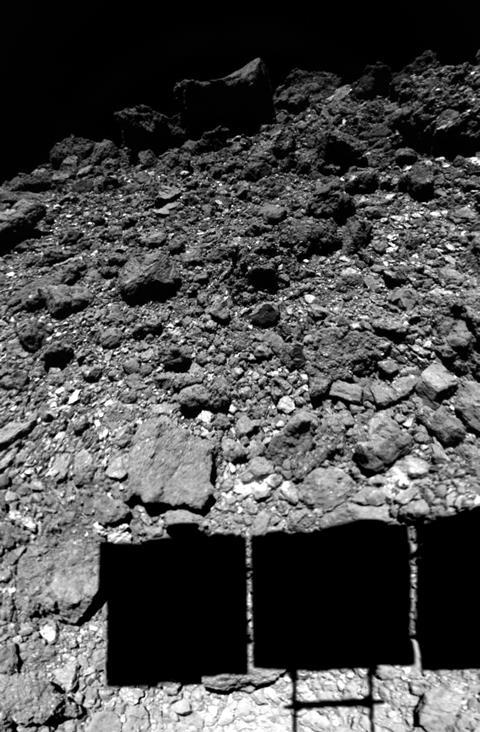
Hayabusa2 made two sample collection attempts at Ryugu. The first, in February 2019, was to collect surface material from near its equator. The spacecraft gently touched down and then fired a projectile to kick up dust and rocks on the surface. This material was then, hopefully, captured in the container of the sampling system.
Two months later, Hayabusa2 fired a larger pellet at Ryugu, creating an artificial crater and therefore exposing material that lies beneath the asteroid’s surface. ‘The second touchdown in July 2019 was carried out near this artificial crater, where ejecta from the crater had accumulated,’ explains Yoshikawa, the mission manager for Hayabusa2. These manoeuvres appeared to run smoothly, but it isn’t yet known how much sample is on board Hayabusa2. ‘We will only know this when we open the re-entry capsule,’ explains Yoshikawa. ‘If we get 0.1g sample, we can do all the analysis that we have planned.’
As well as sample-collecting tools, Hayabusa2 has numerous cameras and remote sensing instruments on board. It also transported four small hopping rovers to the asteroid. ‘Three were successfully landed on the surface of Ryugu,’ says Yoshikawa. The fourth had technical problems before deployment, and was put into an orbit around the asteroid while gravitational measurements were taken.
Data collected by Hayabusa2 and its rovers have started to be published, including details of the shape (it looks like a spinning top), mass, density, colour, surface composition, prevalence of craters and thermal properties. In April 2019, a series of papers revealed that Ryugu is a rubble pile of loose rocks with a 500m equatorial radius. The team also explained how the remote data has helped them constrain this tiny asteroid’s formation process; the current assumption is that it formed by reaccumulation of rubble ejected from an impact between larger asteroids. Further analysis back on Earth should help confirm this.
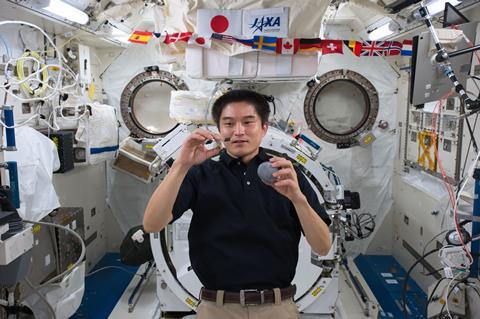
Other analysis planned for the returned sample include looking for organic matter and water, to help unpick how life on Earth begin. ‘We will also look for minerals relevant for the study of planetary formation,’ Yoshikawa says.
Sample collection from Bennu by Osiris-Rex is scheduled for August 2020. ‘We spent all of 2019 mapping the asteroid,’ explains Lauretta, the mission principal investigator. ‘We have identified a primary sample site and a backup site, and are now carrying out a series of rehearsals to get the spacecraft ever closer to the surface of the asteroid.’
That was a huge surprise; we didn’t without expect Bennu to be an active asteroids
The plan is to make contact with Bennu’s surface for just five seconds. Once the sampler head touches the surface, high pressure nitrogen gas will be fired downwards to fluidise the gravel and small rocks on the surface and, hopefully, drive it up into the collection chamber. ‘If everything goes exactly perfect, we could have as much as 2kg of sample,’ Lauretta says. However, the target amount for the mission is 60g.
Data collected using the Osiris-Rex science payload published so far includes confirmation of Bennu’s mass and a preliminary explanation for its wild spin. The biggest finding of the mission so far is that particles are frequently spewed from the asteroid’s surface. ‘One week after we started orbiting, we saw the first of many eruptions from the asteroid surface,’ explains Lauretta. These particles range from centimetres to tens of centimetres, with each eruption ejecting anywhere from just a few to hundreds of particles. ‘That was a huge surprise; we didn’t without expect Bennu to be in the very rare group of asteroids called active asteroids,’ Lauretta says. The reason for the eruptions isn’t yet known.
Once the samples are returned to Earth, the Osiris-Rex team will carry out an initial characterisation using non-destructive methods. It will then select up to 25% of the sample for more detailed analysis, which will include destructive techniques. ‘The other 75% will be made available to the broader scientific community for their own investigations,’ explains Lauretta.
Deep impact
The next spacecraft to launch off to an asteroid will be Nasa’s Dart in July 2021. Its destination is the moon of the near-Earth asteroid Didymos. This mission is a planetary defence test, to explore whether slamming a spacecraft into an asteroid at high speed can change its trajectory. Didymos’ moon (charmingly known as Didymoon) was chosen for the test because it is in the size of asteroid class considered to be most dangerous for Earth. In late 2022, Dart will strike Didymoon at over 23,000km per hour, while ground-based and space telescopes watch eagerly for any changes in the moon’s velocity and direction.
In recent years, infrastructure to monitor asteroids that stray near Earth have been beefed up, meaning their path can be determined and, if necessary, the impact location evacuated. ‘But in terms of doing something to change their trajectory, we are not equipped in any way, shape or form,’ explains Lauretta. Ideas being considered, aside from bumping an asteroid off course with a spaceship, include firing a nuclear weapon at it and using a gravity tractor. Here, a spacecraft could be put into a highly elliptical orbit around the asteroid, repeatedly coming close to it before moving away again. ‘This gravitational interaction between the spacecraft and the asteroid will give it a little tug in the direction of the close approach,’ Lauretta explains. ‘If you do this continuously for 10 years you could nudge it substantially, changing the course of the asteroid.’
The day an asteroid comes towards us, we will have the tools ready to deflect the asteroid
In 2024, to assess the success of Dart’s impact in more detail, the ESA will launch its Hera spacecraft to rendezvous with Didmos and its moon. It is expected that space and ground-based telescopes will be able to determine any changes in velocity and direction of Didymoon, explains Ian Carnelli, the Hera mission manager. But they won’t be able to tell us why any of these changes occurred. That’s the job of Hera and the two shoebox-sized CubeSat satellites it is transporting to Didymoon with it. ‘The measurements we will perform are focused in getting all of the data that is needed for our computer simulation programmes so that we can recreate the Dart impact and validate our models. [This means] that the day an asteroid comes towards us, we will have the tools ready to design the mission that we need to deflect the asteroid by a certain amount,’ Carnelli says.
After they arrive in December 2026, the instruments on board Hera and the CubeSats will collect detailed information about the shape of the crater caused by Dart. It will also study the moon’s chemical composition and its interior structure. ‘The structural details have particularly strong implications on the interpretation of the results of the impact,’ explains Carnelli. ‘If you have a porous asteroid, the effect would be similar to that of an airbag: the voids inside the asteroid will absorb energy from Dart. Whereas if you have a monolithic rock, the shockwave would travel throughout the asteroid.’
Unlike Dart, the Hera mission is also collecting scientific information unrelated to the planetary defence test. Questions the mission hopes to answer include why Didymos has a moon. ‘Scientists estimate that about 20% to 30% of the asteroids have moons,’ says Carnelli, but there are competing theories about how they form. It is possible that centrifugal forces upon asteroids that are rubble piles may cause them to throw out some of the more loosely held material within the pile, explains Fitzsimmons, the science advisor for the Hera mission. The ejected matter can then form a moon around the asteroid. ‘If this theory is correct, then the chemical makeup of the moon of Didymos and the main body will be the same,’ he adds.
Hera will also collect scientific data to improve models that determine the age of asteroids based on crater counts and to help answer some fundamental questions about asteroid spins.
Where no-one has gone before
In October 2021, just three months after the launch of Dart, another Nasa asteroid mission is scheduled for takeoff: Lucy. It will fly past eight asteroids; one in the main asteroid belt and seven in Jupiter’s Trojans. Lucy will be the first ever mission to visit the Trojans which, unlike the near-Earth asteroids or those in the main asteroid belt, don’t supply meteorites to Earth. This means all the information we have about them is from telescopes.
What is known is that their colours are very different from each other. ‘Colour tells you something about their gross chemical composition,’ explains Levison, the principal investigator of the Lucy mission. This colour difference is surprising because they occupy a relatively small region of space, he adds. ‘The hope is by getting closer we will be able to better resolve the surface, [collect information on their] geology and do crater counts that will allow us to determine how old the bodies are and how violent a history they’ve seen.’
As well as helping Levison and his team unpick why the Trojans are such different colours from each other, this information will also help with understanding of how this region of the solar system formed. ‘The different chemistries of all these bodies will tell us the migration history of the giant planets or at least constrain it,’ Levison explains.
The final frontier
Nasa’s next asteroid exploration mission will be Psyche. Scheduled to launch in 2022, the spacecraft will spend nearly two years orbiting its namesake asteroid, a metallic asteroid in the main belt. A metallic asteroid has never been photographed before, let alone visited, explains Lindy Elkins-Tanton, professor at Arizona State University and principal investigator of the Psyche mission.
We’re not going to know that until we get there
Ground-based radio telescopes were key to revealing that Psyche is metallic. ‘We can bounce radar right off it and receive the return,’ explains Elkins-Tanton. ‘Seeing how the radar interacts with the surface is one of the indications that it has metal.’ But exactly what proportion of metal Psyche contains is unknown. ‘We’re not going to know that until we get there,’ she adds.
It is thought that Psyche is the exposed nickel–iron core of an early planet, which got broken up and stranded in the asteroid belt. The mission plans to test this hypothesis. If it’s right, exploring Psyche will give a tantalising insight into what the metallic core of Earth and the other rocky planets is like. ‘We have samples of metal meteorites that have fallen to Earth,’ Elkins-Tanton says. ‘But we’ve never seen a metal core, and there’s no way we can ever see the metal core of any of the planets.’
Exploration missions to three more near-Earth asteroids are also coming down the pipeline. Jaxa’s Destiny+ mission, scheduled to launch in 2022, will fly by Phaethon. The CNSA is planning a sample return mission to HO3, reportedly scheduled to launch in 2024. And Nasa is planning a visit to Apophis in 2029.
Delays to space missions are commonplace, however, and Nasa has already announced that the current coronavirus outbreak has delayed a number of its space projects. A similar impact on these asteroid exploration missions would, therefore, not be unexpected.
Regardless of these setbacks, by the end of the 2020s we look set to know much more than we currently do about the asteroids in our neighbourhood of space as well as those further afield. This information will help us unpick the mystery of where life come from, better understand how our planet and planetary system formed, and may even enable us to better defend our planet against future asteroid strikes.
Nina Notman is a science writer based in Salisbury, UK
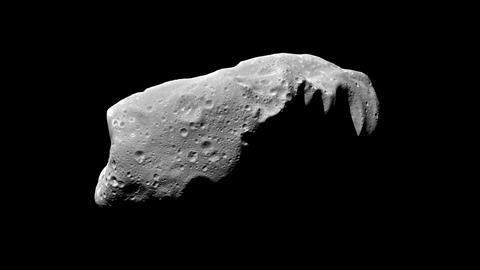
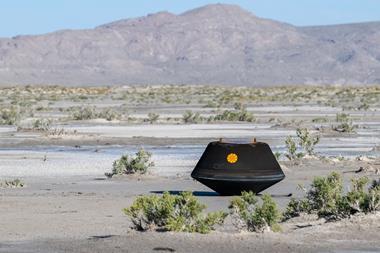
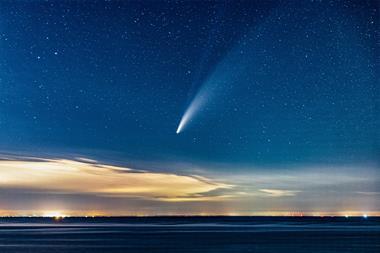
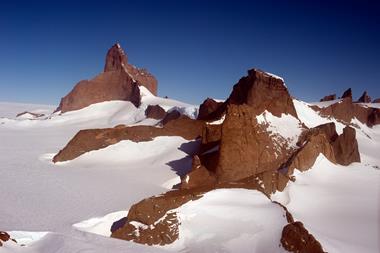









No comments yet